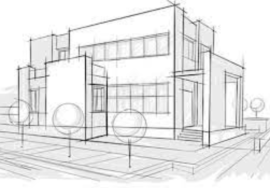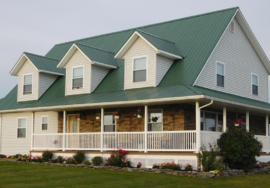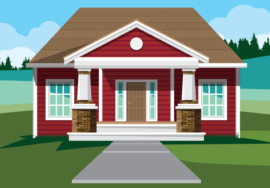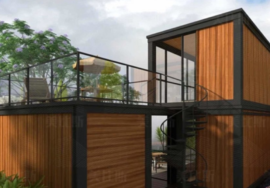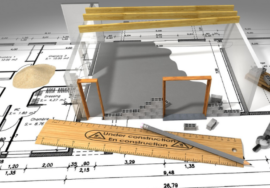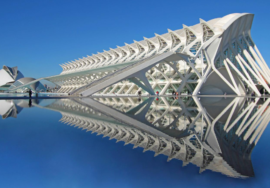
How to Build a Great Model Train Layout in Your Own Home
If you’re thinking about creating your own model train layout in your home, you’re not alone. Millions of people across the world enjoy this hobby that seems to be growing more and more popular every year. Model trains are pretty easy to find these days, either online or in specialty stores near you, but finding high-quality pieces and supplies can be challenging. If you’re looking to build a great model train layout in your own home, here are some tips to help you get started.
Before you start
Step 1 – Choose The Size Of Your Model Train Layout
The first step is to determine what size your model train layout will be. This will depend on how much space you have and how large your budget is. A standard size for Great Model Train Layouts is about one meter by 1.5 meters or around three feet by five feet. This gives you enough room for some beautiful scenery, and it still fits nicely into most home living spaces. You can increase or decrease both of these dimensions depending on your preferences, but try not to make them too large as that may force you to build a custom bench work or train table which is an expensive undertaking if you are just getting started building Great Model Trains Layouts at home.
Step 2 – The Right Bench Work And Track Planning
Begin by laying out your plan for train tracks, benches and scenery. Look for interesting routes for your trains and make sure that you don’t run them into each other or block access to certain parts of your room. A popular way to help do that is to use a thin tape on floors or bench work so that when you lay track, you know where it will be. If you’re working with friends or family members on your model train layout project, get everyone involved early—this will help ensure that every part of your railway will fit together nicely. Remember: Just because there are several feet between one area of bench work and another doesn’t mean everything has to be hundreds of feet apart!
Step 3 – The Right Trains And Their Parts
It’s difficult to know where to start when creating scenery for your model railroad. First, think about scale: How large or small do you want your model train layout? Do you have space for it? What will you be using for scenery – real materials like trees and rocks, or fake materials that are cheaper but easier to work with (most people opt for softer materials). Scenery adds an additional fun dimension; it allows you to make beautiful background scenes for your trains as they go speeding by. The most important thing is that you enjoy what you’re building – let yourself be inspired by other models and ideas!
Step 4 – Creating Scenery
Scenery is critical to making your model train layout unique and enjoyable. There are many different methods for creating scenery including creative rock work, foliage and other types of materials that can be purchased specifically for use with model trains. One important thing to keep in mind while building scenery is that you should make sure that it’s proportionate when compared with your trains, tracks and train table. Also, you should find out which type of track system you want to use because some layouts need specialized track such as S-scale or PFM (Precision Fit-Flexible) track systems. Once you’ve determined these two things, you can begin looking into what types of accessories will be useful and interesting on your layout.
Step 5 – Where To Put It All In?
This step is an overview of what you should do and include when building and maintaining your model train layout. Make sure that you have read through and understood all of these suggestions before beginning. Remember, Knowledge is Power. If you take good care of your layout then it will last for many years. Here are some general suggestions for making sure that your railroad lasts as long as possible Model Trains – Before putting any trains on your track, make sure that they run smoothly. You don’t want any unnecessary friction between rolling stock and track. You also want to make sure that they aren’t damaged or broken in any way so check them over carefully before using them on your model railroad layout. Track – When laying out track sections, keep them level at all times! It’s very important not to let one side dip lower than another because if you do then there’s a chance that trains could derail or get stuck on uneven ground which would be quite dangerous for both passengers and crew members alike! Benchwork – The benchwork is basically everything above ground level including walls, platforms, bridges etcetera which can be seen from outside of your layout room.
Step 6 – Maintenance And Upkeep Tips
Make sure your layout has plenty of overhead lighting, and consider adding track lights that are easy to find and replace bulbs. Also make sure that you have extra bulbs on hand at all times. Maintenance will be much easier if you use regular-sized bulbs so that you can get replacement bulbs from any hardware store; LED versions of small-sized bulbs might be hard to come by if one goes out, making an already challenging maintenance job even harder. Step 7 – Choose A Scale: For most model train enthusiasts, there is no wrong scale. Some people like HO scale trains because they’re smaller than other scales; others prefer large G scale trains because they’re more detailed and cost less per foot than HO or N scale models. Still others like Z gauge trains because they’re very detailed and run on narrow gauge tracks—but keep in mind that these models require special track sections to accommodate their size. Whatever you choose, don’t let anyone tell you it’s not right for you! In addition to choosing a scale, decide whether you want standard or narrow gauge (or both). Standard gauge is what comes with most starter sets; it’s also what commercial railways use.


